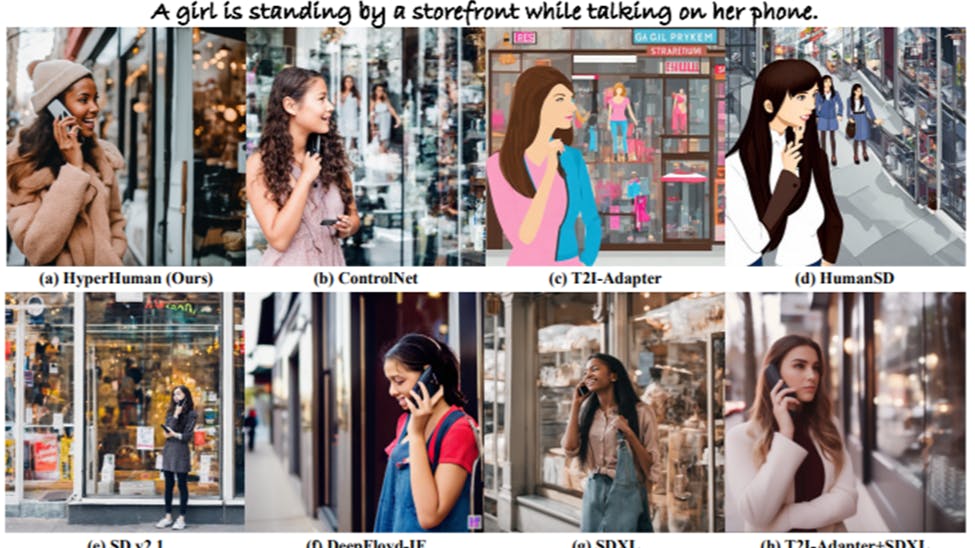Authors:
(1) Xian Liu, Snap Inc., CUHK with Work done during an internship at Snap Inc.;
(2) Jian Ren, Snap Inc. with Corresponding author: [email protected];
(3) Aliaksandr Siarohin, Snap Inc.;
(4) Ivan Skorokhodov, Snap Inc.;
(5) Yanyu Li, Snap Inc.;
(6) Dahua Lin, CUHK;
(7) Xihui Liu, HKU;
(8) Ziwei Liu, NTU;
(9) Sergey Tulyakov, Snap Inc.
Table of Links
3 Our Approach and 3.1 Preliminaries and Problem Setting
3.2 Latent Structural Diffusion Model
A Appendix and A.1 Additional Quantitative Results
A.2 More Implementation Details and A.3 More Ablation Study Results
A.5 Impact of Random Seed and Model Robustness and A.6 Boarder Impact and Ethical Consideration
A.7 More Comparison Results and A.8 Additional Qualitative Results
4 HUMANVERSE DATASET
Large-scale datasets with high quality samples, rich annotations, and diverse distribution are crucial for image generation tasks (Schuhmann et al., 2022; Podell et al., 2023), especially in the human domain (Liu et al., 2016;Jiang et al., 2023). To facilitate controllable human generation of high-fidelity, we establish a comprehensive human dataset with extensive annotations named HumanVerse. Please kindly refer to Appendix A.9 for more details about the dataset and annotation resources we use.
Dataset Preprocessing. We curate from two principled datasets: LAION-2B-en (Schuhmann et al., 2022) and COYO-700M (Byeon et al., 2022). To isolate human images, we employ YOLOS (Fang et al., 2021) for human detection. Specifically, only those images containing 1 to 3 human bounding boxes are retained, where people should be visible with an area ratio exceeding 15%. We further rule out samples of poor aesthetics (< 4.5) or low resolution (< 200 × 200). This yields a high-quality subset by eliminating blurry and over-small humans. Unlike existing models that mostly train on full-body humans of simple context (Zhang & Agrawala, 2023), our dataset encompasses a wider spectrum, including various backgrounds and partial human regions such as clothing and limbs.
2D Human Poses. 2D human poses (skeleton of joint keypoints), which serve as one of the most flexible and easiest obtainable coarse-level condition signals, are widely used in controllable human generation studies (Ju et al., 2023b). To achieve accurate keypoint annotations, we resort to MMPose (Contributors, 2020) as inference interface and choose ViTPose-H (Xu et al., 2022) as backbone that performs best over several pose estimation benchmarks. In particular, the per-instance bounding box, keypoint coordinates and confidence are labeled, including whole-body skeleton (133 keypoints), body skeleton (17 keypoints), hand (21 keypoints), and facial landmarks (68 keypoints).
Depth and Surface-Normal Maps are fine-grained structures that reflect the spatial geometry of images (Wu et al., 2022), which are commonly used in conditional generation (Mou et al., 2023). We apply Omnidata (Eftekhar et al., 2021) for monocular depth and normal. The MiDaS (Ranftl et al., 2022) is further annotated following recent depth-to-image pipelines (Rombach et al., 2022).
Outpaint for Accurate Annotations. Diffusion models have shown promising results on image inpainting and outpainting, where the appearance and structure of unseen regions can be hallucinated based on the visible parts. Motivated by this, we propose to outpaint each image for a more holistic view given that most off-the-shelf structure estimators are trained on the “complete” image views. Although the outpainted region may be imperfect with artifacts, it can complement a more comprehensive human structure. To this end, we utilize the powerful SD-Inpaint to outpaint the surrounding areas of the original canvas. These images are further processed by off-the-shelf estimators, where we only use the labeling within the original image region for more accurate annotations.
Overall Statistics. In summary, COYO subset contains 90, 948, 474 (91M) images and LAION-2B subset contains 248, 396, 109 (248M) images, which is 18.12% and 20.77% of fullset, respectively. The whole annotation process takes 640 16/32G NVIDIA V100 GPUs for two weeks in parallel.
This paper is available on arxiv under CC BY 4.0 DEED license.

